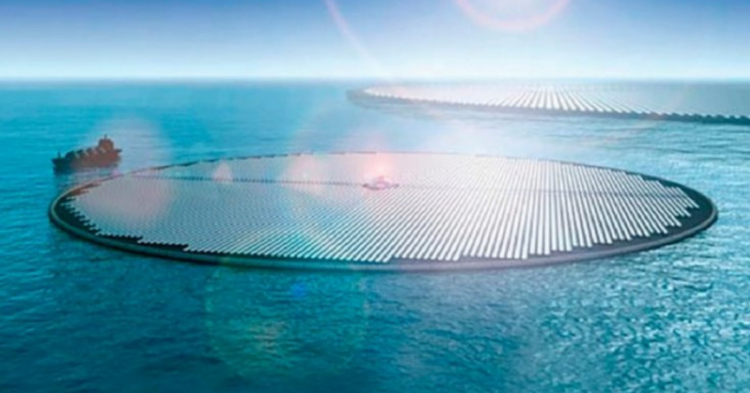When it comes to solving the climate crisis, where do we even begin? It’s a gargantuan task, but one of the first steps revolves around finding renewable energy sources. An innovative new idea looks like it could be part of the solution.
Conventional power plants are full of downsides.

Coal is a big polluter. Nuclear is fairly clean if things are working right. But after a few real world close calls (not to mention HBO’s Chernobyl miniseries), the nuclear option gives lots of people pause.
What about solar?

Solar panels have gone up in efficiency and down in price over the past decade or so, and increasingly look like a viable option. But to provide lots of power, you need lots of solar panels.
A new paper outlines an intriguing concept.

The paper , published in the scientific journal PNAS, argues in favor of floating solar farms. The world’s oceans are full of empty real estate, and might be the best place to set up solar arrays on a massive scale.
There’s another benefit.

Not only do the panels generate energy from sunlight, the island’s position in the ocean is beneficial as well. If properly equipped, these islands could literally take in seawater and convert its components into fuel.
Wait, what?

Seawater is full of carbon dioxide. With the right equipment, this carbon dioxide can actually be converted into methanol, which is commonly used in vehicles that take fuel — planes, trucks and even cars.
Some firms are already working on this.

One company, Novaton already has a few proofs-of-concept out there in the wild. These aren’t quite the size of the solar farms envisioned in the article, but they still show that a floating solar array is quite possible.
How big would these floating solar farms be?

About 70 individual islands, attached to one another, would form the basis for one of the larger “islands”. The overall size would be about one square kilometer, or a little less than half a square mile.
They could create serious power.

In addition to the energy captured by the solar panels, the paper’s authors say just one island could produce enough methanol to fuel a Boeing 737 on 300 round-trips between New York and Phoenix.
What’s so great about methanol?
Besides its cameo in Breaking Bad (it was never as valuable as methalymine, but still), methanol can be generated without drilling (unlike most fossil fuels). It also burns more cleanly. Once it’s used and dissipates into the atmosphere, it re-enters the oceans and starts the process all over agian.
What do you think?

We need fuel and electricity, but we also don’t want to overheat our planet. What do you think lawmakers have to do to ensure that we have a sustainable future? Let us know in the comments!

















































